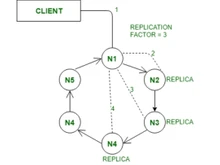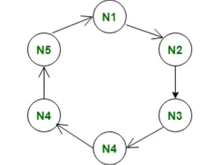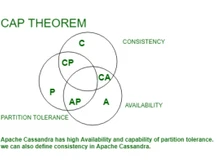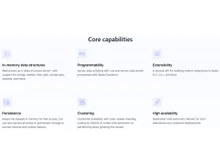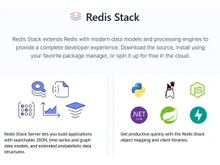Cassandra and Redis are two of the most popular data storage systems available. Each has unique strengths and applications of their own. While Cassandra excels in handling large-scale distributed data with high availability and fault tolerance, Redis stands out as an in-memory store designed for the best performance, especially in caching, messaging, and real-time analytics. In this quick comparison, we will understand the key differences and best-use scenarios for these popular data storage solutions.
Cassandra vs. Redis: An Overview
Cassandra is an open-source, distributed NoSQL database software designed to handle large amounts of data across multiple servers while providing high availability and fault tolerance. Apart from that, it uses a decentralized architecture with a masterless design. This makes it suitable for scalable and real-time applications, particularly for write-heavy workloads and time-series data storage.
Redis, on the other hand, is an open-source and in-memory data structure store used as a database, cache, and message broker. It supports various data structures and offers exceptional performance with low latency access to data. Moreover, Redis is frequently used for caching, real-time analytics, and messaging, and provides high availability and seamless scalability through its distributed architecture.
Cassandra vs. Redis: Key Differences
Some of the key differences between Redis and Cassandra include:
- Redis and a few Redis alternatives are an in-memory data store used as a database, cache, and message broker while Cassandra is a wide-column store NoSQL database for distributed data storage.
- Cassandra and a few Cassandra alternatives offer high write and read throughput, suitable for high-speed transactional applications, whereas Redis provides exceptional performance with low-latency data access due to its in-memory architecture.
- Redis is commonly used as a caching layer, message broker, and for real-time analytics requiring low-latency data access, while Cassandra is well-suited for high availability and scalability, ideal for real-time analytics and data management.
- Both databases offer integration capabilities with various programming languages, frameworks, and third-party tools through client libraries, connectors, and APIs. However, Redis still stays ahead in the game.
Cassandra and Redis: In Terms of Features
Below are some of the major distinctions between Cassandra and Redis based on features, and these include:
- Speed & Performance: Cassandra provides high write and read throughput, making it suitable for high-speed transactional applications. Redis, in contrast, is known for its exceptional performance due to its in-memory data storage architecture, which enables low-latency data access.
- Replication: Redis offers replication and persistence options, including various levels of data persistence and high availability through Redis Sentinel and Redis Cluster. Whereas Cassandra provides inbuilt support for replication and persistence through its configurable replication factor and write mechanisms.
- Query Language: In terms of Query language, Cassandra uses CQL (Cassandra Query Language) for database operations while Redis uses commands for data manipulation and retrieval.
- Data Structures: Redis supports a variety of data structures including strings, lists, sets, sorted sets, hashes, bitmaps, and more. On the other hand, Cassandra stores data in a tabular format, using a wide-column store data model.
Cassandra vs. Redis: Technology Type
Cassandra is a distributed, wide-column store NoSQL database. In contrast, Redis is an open-source, in-memory data structure store used as a database, cache, and message broker. However, both Cassandra and Redis can be integrated with machine-learning frameworks and platforms to support machine-learning applications. Apart from that, they both can be deployed on-premises or in the cloud, with support for various deployment models including single node, cluster, and managed services.
Cassandra or Redis: System Architecture
Cassandra follows a distributed architecture with a peer-to-peer node communication model, allowing for decentralized data distribution. However, Redis offers a distributed architecture to support a range of high availability and data-sharding configurations.
Cassandra and Redis: Programming Languages
In terms of programming language, Redis supports multiple languages including Java, C/C++, Python, PHP, and more. However, Cassandra is mainly programmed in Java but also provides CQL (Cassandra Query Language) for database operations.
Cassandra or Redis: Uses and Applications
On one hand, Cassandra is well-suited for use cases requiring high availability and scalability, such as real-time analytics and IoT data management. Redis, on the other hand, is commonly used as a caching layer, message broker, and for real-time analytics in applications requiring low-latency data access.
Cassandra vs. Redis: Ease of Use
Redis is generally considered straightforward to install and use, especially for simple caching and in-memory data storage needs. On the contrary, Cassandra can be complex to set up and manage due to its distributed nature and other configuration requirements.
Cassandra or Redis: Availability and Scalability
Cassandra supports high availability and scalability with the external help of multi-data center deployments and automatic data distribution. Redis, however, supports high availability and scalability through its built-in replication, clustering, and partitioning mechanisms.
Verdict: Cassandra vs. Redis
In a nutshell, Cassandra and Redis offer distinct approaches to data storage and data management. On one hand, Cassandra is designed for distributed data storage, and high write, and read throughput, making it a strong fit for high-speed transactional applications and real-time analytics. On the other hand, Redis is better known for its in-memory architecture, delivering exceptional performance for caching, messaging, and real-time analytics, particularly for low-latency data access. Each system is optimized for specific use cases, with Cassandra prioritizing high availability and scalability, while Redis excels in rapid data retrieval and processing.


 4 Ratings & 4 Reviews
4 Ratings & 4 Reviews


